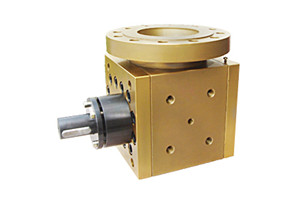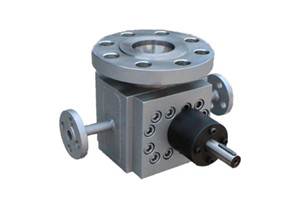The performance of an extruder plastic melt pump is conditioned by the channel always open between the input and the output.
All of these factors can be highly variable, and all affect the pressure generation. And obviously the throughput will also change when the pressure of the plastic varies as it goes through the die.
The throughput of the plastic which the screw can deliver while maintaining a given output pressure is also variable because the screw type pump is not a constant volume device. Pumping must be done with an open channel always in existence from output to input, see Fig. 6.1. Note that this statement is still true, even in the presence in the plastic path of a mixer, such as a Maddock mixer, or a barrier, as in a barrier screw. For the mixing action in either case results when the plastic passes over the barrier and is subjected to the resulting shearing action. In neither case is the screw a positive displacement device, where a constant volume of plastic is pumped with each revolution, irregardless of back pressure and other phenomena. The curves in Figs. 6.2 and 6.3 illustrate these variations in two different ways. The data were created with the same general purpose screw with a 3 : 1 compression ratio, that is, the ratio of the pressure in the last section of the screw (the melting section) to the first screw section (the feed section)of plastic melt pump .


Figure 6.2 is a conventional plot showing how throughput varies with back pressure at a constant RPM. The classic method of analyzing the behavior of a screw type plastic melt pump is to think of the delivery as consisting of two components - a drag flow, determined only by the dimensions of the metering section of the screw, minus a back flow which is an assumed reverse flow back down the open channel resulting from the back pressure at the output. The throughput drops 44% in the face of a 4,000 psi variation in back pressure! Figure 6.3 shows the variation in RPM required by a screw to maintain constant throughput of plastic. Note that this screw was not selected to be bad. It is a perfectly typical general purpose screw designed for polystyrene. In addition to the usual feed section, transition section, and metering section, it had a Maddock mixer (equivalent to a barrier screw) for dispersive mixing, and a Saxton mixer, for distributive mixing.
